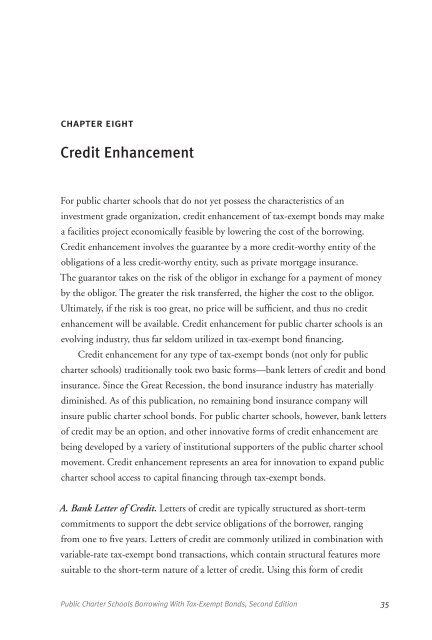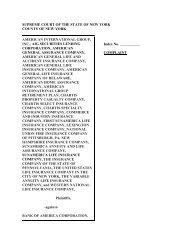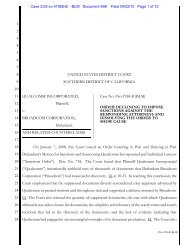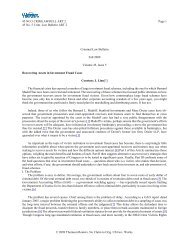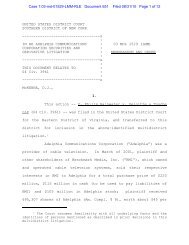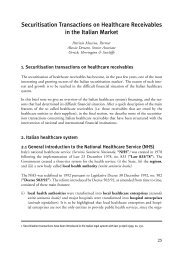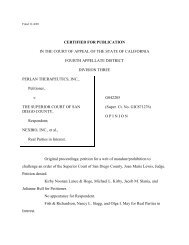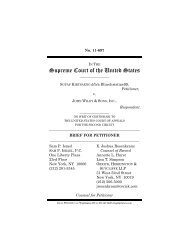Public Charter Schools Borrowing With Tax-Exempt Bonds, Second ...
Public Charter Schools Borrowing With Tax-Exempt Bonds, Second ...
Public Charter Schools Borrowing With Tax-Exempt Bonds, Second ...
Create successful ePaper yourself
Turn your PDF publications into a flip-book with our unique Google optimized e-Paper software.
chapter eight<br />
Credit Enhancement<br />
For public charter schools that do not yet possess the characteristics of an<br />
investment grade organization, credit enhancement of tax-exempt bonds may make<br />
a facilities project economically feasible by lowering the cost of the borrowing.<br />
Credit enhancement involves the guarantee by a more credit-worthy entity of the<br />
obligations of a less credit-worthy entity, such as private mortgage insurance.<br />
The guarantor takes on the risk of the obligor in exchange for a payment of money<br />
by the obligor. The greater the risk transferred, the higher the cost to the obligor.<br />
Ultimately, if the risk is too great, no price will be sufficient, and thus no credit<br />
enhancement will be available. Credit enhancement for public charter schools is an<br />
evolving industry, thus far seldom utilized in tax-exempt bond financing.<br />
Credit enhancement for any type of tax-exempt bonds (not only for public<br />
charter schools) traditionally took two basic forms—bank letters of credit and bond<br />
insurance. Since the Great Recession, the bond insurance industry has materially<br />
diminished. As of this publication, no remaining bond insurance company will<br />
insure public charter school bonds. For public charter schools, however, bank letters<br />
of credit may be an option, and other innovative forms of credit enhancement are<br />
being developed by a variety of institutional supporters of the public charter school<br />
movement. Credit enhancement represents an area for innovation to expand public<br />
charter school access to capital financing through tax-exempt bonds.<br />
A. Bank Letter of Credit. Letters of credit are typically structured as short-term<br />
commitments to support the debt service obligations of the borrower, ranging<br />
from one to five years. Letters of credit are commonly utilized in combination with<br />
variable-rate tax-exempt bond transactions, which contain structural features more<br />
suitable to the short-term nature of a letter of credit. Using this form of credit<br />
<strong>Public</strong> <strong>Charter</strong> <strong>Schools</strong> <strong>Borrowing</strong> <strong>With</strong> <strong>Tax</strong>-<strong>Exempt</strong> <strong>Bonds</strong>, <strong>Second</strong> Edition 35


